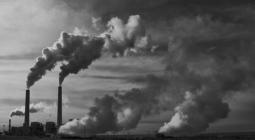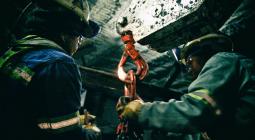Best time for thermal plants to upgrade for renewable energy: GE Steam Power’s Kevin Cogo and GE Power India’s Prashant Jain.

With the rising share of renewable energy, questions are being raised regarding the future of coal-based power plants.
Kevin Cogo, who leads GE Steam Power’s rotating equipment product line globally and Prashant Jain, managing director, GE Power India, tell FE’s Anupam Chatterjee why the world’s largest original equipment manufacturer feels that this is the best time to upgrade thermal power plants to integrate intermittent renewable energy smoothly in the grid.Edited excerpts:
What are your thoughts on the rise of renewable energy in the country’s energy basket?
Jain: Roughly thermal power generates much more electricity as compared with its share in the installed capacity. Hence, it is becoming more significant today. With 175 GW of renewable energy coming in the grid by 2023, when demand is expected to be around 1,500 billion units (BU), we would need about 1,200 BU from thermal, up from 900 BU right now. This means we need more thermal capacity to generate electricity to complement and support renewables.
What would you say about the public perception being allegedly against thermal power?
Jain: People should be made more aware about the dynamics of the sector. It is important that people talk about this in a more balanced way. Adding renewables is of course the right thing to do for setting a green future. The government has also taken the right steps by triggering the flue gas desulfuriser (FGD) demand, to make existing coal power plants greener. Some plants probably will not be able to match the new emission norms within the timeline and such capacities would be replaced with brownfield plants. When we recruit new talent, we often come across this question. This is what I tell them: What we do is valuable, 200 GW on the grid will at least continue for ten years. Plus, it is very important to put in the new technology in the existing plants to make them more efficient and flexible.
Cogo: Renewables being installed call for more flexibility and efficiency of steam turbines. This is where we are currently putting more of our investments. We are addressing this market because we have the capacity to build integrated power plants. To provide flexibility to the grid, we produce a ‘synchronous condenser’ which we make in our Sanand plant. With renewables, you have a lot of frequency fluctuations in the grid which can be addressed by this condenser.
What are you doing for thermal power producers vis-a-vis renewables?
Jain: Thermal plants will have to go online and offline much faster with the advent of renewable energy. We have a great technology for ramp rates. For a typical 500 MW plant, the ramp rate is around 5 MW per minute. Our technology can triple this rate, helping plants to ramp up and down much faster. We also offer technology to alter the technical minimum capacities at which power plants operate. These two technologies are required to make the plant more flexible to allow more renewable integration.
With the government making it clear that coal is here to stay, especially since we have abundant reserves, do you have any product that caters to Indian coal quality?
Jain: In the country, power plants actually do not receive the quality of coal according to which they were initially designed. Even in the stock yards, various qualities of coal get mixed up. This opens up tremendous potential for optimising the systems. We have the ‘digital boiler optimisation’ solution which can help customers manage the uncertainty of coal quality. This can regulate the combustion levels of the boilers based on the quality of coal that is being used. This also helps in reducing Nox emissions by a large extent. Our boiler technology is adapted to the Indian coal with high ash content. We have a good relations with BHEL where we provide the technology for the boilers.
Cogo: This is something we do everywhere in the world. Our service business delivers equipment parts to customers for their outages. We keep upgrading our own machines and those of our competitors. We are currently upgrading the Chinese fleet with latest technology which is increasing their efficiency. Since the last four to five years, we are building stronger partnerships with larger EPC companies. We have a very strong relationship with Chinese EPCs. For example, Adani Power’s Godda is one of the projects we are doing with Sepco3, a Chinese EPC.
10 October 2019
FINANCIAL EXPRESS




